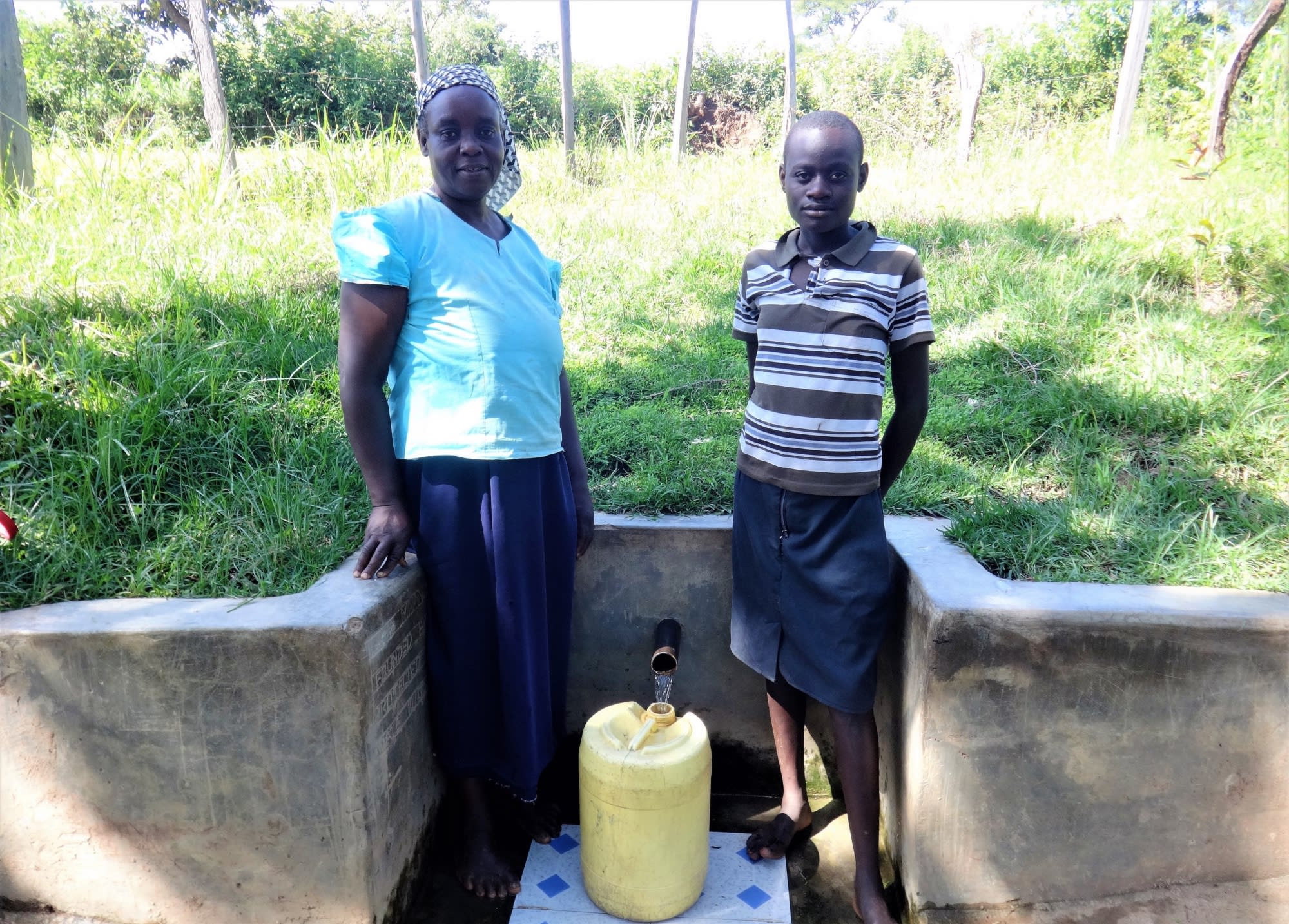The people of Ingavira Community wake up very early in the morning to work on their farms, while the children prepare for school. The families support themselves by growing maize, sugarcane, groundnuts, bananas, and yams. Many also raise dairy cattle or tend to fish ponds. Through all of these endeavors, they are unique in that they can afford the school fees for their children.
Water
Laban Mwanzo Spring is a main water source for hundred living in this area. This water is open at ground level, completely unprotected from contaminants. The quality is especially poor after it rains, when rainwater washes dirt, farming chemicals, and feces into the water.
Community members even have to drink this water. Most say they've suffered from waterborne diseases; diarrhea and stomachaches are normal day to day occurrences.
Mr. Laban Mwanzo owns the land the spring flows through.
"Protecting the spring will solve our water problems. Moreover, the sanitation facilities and health promotion campaign through trainings will enable, enlighten, and build the capacity of the community to take matters related to health as a priority," he said.
Sanitation
The situation is even worse because over half of families in this area don't have their own latrine. They're not disposing of waste properly, which further contaminates the surrounding community and its drinking water. There are no hand-washing stations to prevent the spread of germs through contact, either.
Here's what we're going to do about it:
Training
Community members will attend hygiene and sanitation training for at least two days. This training will ensure participants have the knowledge they need about healthy practices and their importance. The facilitator plans to use PHAST (Participatory Hygiene and Sanitation Transformation), CLTS (Community-Led Total Sanitation), ABCD (Asset-Based Community Development), group discussions, handouts, and demonstrations at the spring. One of the most important topics we plan to cover is the handling, storage, and treatment of water. Having a clean water source will be extremely helpful, but it is useless if water gets contaminated by the time it’s consumed. The building and usage of new latrines and hand-washing stations will also be a big topic.
Training will also result in the formation of a committee that will oversee operations and maintenance at the spring. They will enforce proper behavior around the spring and delegate tasks that will help preserve the site, such as building a fence and digging proper drainage. The fence will keep out destructive animals, and the drainage will keep the area’s mosquito population at a minimum.
Sanitation Platforms
On the final day of training, participants will select five families that should benefit from new latrine floors.
Training will also inform the community and selected families on what they need to contribute to make this project a success. They must mobilize locally available materials, such as bricks, clean sand, hardcore, and ballast. The five families chosen for sanitation platforms must prepare by sinking a pit for the sanitation platforms to be placed over. All community members must work together to make sure that accommodations and food are always provided for the work teams.
Spring Protection
Protecting the spring will ensure that the water is safe, adequate and secure. Construction will keep surface runoff and other contaminants out of the water. With the community’s high involvement in the process, there should be a good sense of responsibility and ownership for the new clean water source.
Fetching water is predominantly a female role, done by both women and young girls. Protecting the spring and offering training and support will therefore help empower the female members of the community by giving them more time and efforts to engage and invest in income-generating activities.
This project is a part of our shared program with Western Water And Sanitation Forum (WEWASAFO). Our team is pleased to provide the reports for this project (formatted and edited for readability) thanks to the hard work of our friends in Kenya.

 Protected Spring
Protected Spring
 Rehabilitation Project
Rehabilitation Project









































